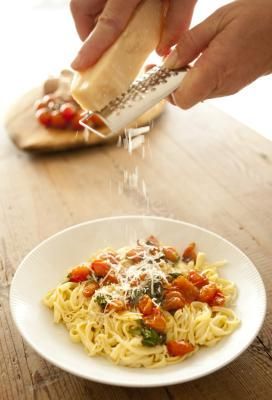Cheap Healthy Meal Plans

Don’t Skip Breakfast
Breakfast can be the healthiest meal of the day and the least expensive to prepare. Oats or unsweetened whole-grain cereal with low-fat milk is inexpensive and provides lots of vitamins, minerals, protein and fiber. Keep frozen fruit on hand to top your cereal. Eggs are also a rich source of many vitamins and one of the lowest-cost protein foods available. Scramble a few for breakfast, and eat them with whole-wheat toast and a piece of fruit, or use them to make French toast topped with frozen berries that have been thawed and heated.
Pack a Lunch
To save money, pack lunch and snacks to eat throughout the day. Leftovers from dinner are always quick and easy. When you have extra salad or even a cooked vegetable, top it with some canned tuna, beans or a hard-boiled egg for protein, and pack it up for lunch. If you’re short on ingredients, peanut butter and jelly is a nutritious standby if you use whole-wheat bread and low-sugar jelly. Fruit and raw vegetables are healthy choices for sides and snacks. Skip the snack-sized bags of chips, and buy healthier pretzels, almonds or whole-grain crackers, and portion them out into single servings
Stock the Kitchen
If you keep some basic ingredients on hand, you can create a balanced and inexpensive dinner by combining a protein, starch and vegetable. Healthy protein options include canned beans, low-fat cheese, canned salmon or frozen fish and less expensive cuts of poultry like skinless chicken thighs. For starches, whole grains like brown rice and quinoa are nutritious sides, but skip packaged mixes, and buy them plain and in bulk to make it cheaper and healthier. Whole-wheat tortillas are also handy to keep on hand for bean and cheese quesadillas, vegetable flatbread pizza or wraps. Balance out your dinner with a good serving of vegetables, along with fruit for dessert. If fresh produce is out of your budget, opt for frozen, which is just as nutritious.
Have a Plan
Eating healthy and sticking to a budget both require some thought and planning, so write out a meal plan in advance, and shop with a list. Look for sale items and stock up whenever possible so you can plan meals around ingredients you have on hand. Rather than buying single-serve and convenience foods, purchase nonperishables in larger containers, which are usually less expensive. Spending money on takeout and convenience foods can really add up, so try to cook at home and cook from scratch as much as possible.
Meal Planning Resources
In light of this recent experience, I’d like to share a few menu-planning services with you. But I’d also like to share how I do it, too.
1. 5 Dollar Meal Plan
5 Dollar Meal Plan provides an email meal plan, menu, and shopping list each week. The menu includes:
- Five dinner entrees with sides – Each week they’ll include one freezer-friendly, one slow cooker, and one 20-minute.
- They also include one lunch and one breakfast, and a random goodie each week – sometimes a dessert, sometimes a beverage, and sometimes a snack.
They only charge $5 a month and they also have a free trial as well.Find out more here.
2. Food On The Table
FoodontheTable.com takes the sale ads from the grocery stores you shop at and recipes you choose, to make a menu and grocery list designed for your family. It really is a clever system for those that plan their meals around the sales fliers.
3. 100 Days Of Real Food
If you’d rather cook from scratch and eat “real food,” you might want to check out 100DaysofRealFood.com. You do not have to do anything but “like” their Facebook page to download four already-prepared menus and corresponding grocery lists/price guides. This service boasts that the menus can be made within the government’s food stamp budget for a family of four.
4. Eating Well Menu Planner
The Eating Well Menu Planner is offered by Eating Well Magazine. Using it, you choose recipes from their website, drop them into the queue, and it gives you the plan, a grocery list, and also keeps track of your weight goals for you.
“An integrated tool calculates your Body Mass Index (BMI) based on your height and weight and tells you how many calories you need to manage your weight.” Of course, the planner keeps “track of your daily totals for calories, fat, carbohydrates and sodium” and lets you know if you “go over the recommended number of calories per day.”